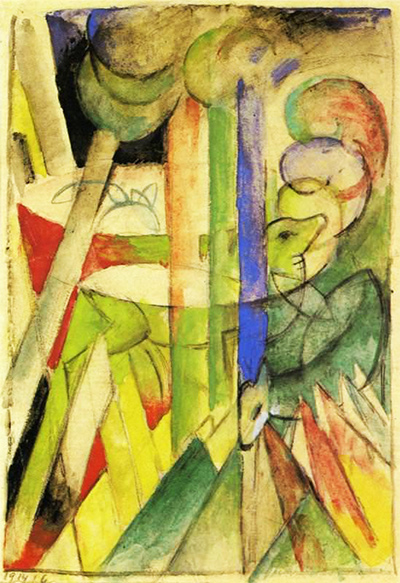Mountain Goats is a later piece by Marc, created in 1914. Decidedly one of his more playful pieces, Mountain Goats invites the viewer to look deep into the painting and find the subjects how have been skillfully rendered to be one with their background, much like their living counterparts often become unnoticeable against their habitats.
The numbers of colours in use help to distract the eye from the subjects and prevent the viewer from growing bored in their search for the goats.
With the outbreak of World War 1, Marc was recruited into the German military and his career as a public artist was put on hold. However, his skill with a paintbrush meant that by 1916 he was commissioned to create camouflage tarpaulins to help disguise German artillery from enemy aircraft.
Following deployment, a list of renowned artists was drawn up including Marc amongst them and orders were issued to withdraw the men on this list from service for their safety. These orders would never reach Marc as he was injured and subsequently killed by shrapnel during the Battle of Verdun.
Born in Munich, 1880, Franz Marc was the son of Wilhelm Marc, a landscape artist of his era, and as such he received an education at the Munich Academy of Fine Arts.
During his time at the academy, an institution still running to this day, Marc was mentored by Gabriel von Hackl and Wilhelm von Deiz in the Naturalist style popular at the time.
Only after leaving Germany to travel to France did Marcs' work begin its transition to the Expressionist style. In Paris, Marc become integrated into local artistic circles and found inspiration for his work in the paintings of Vincent van Gogh and Pablo Picasso.




